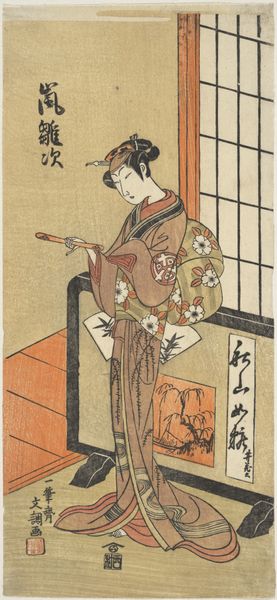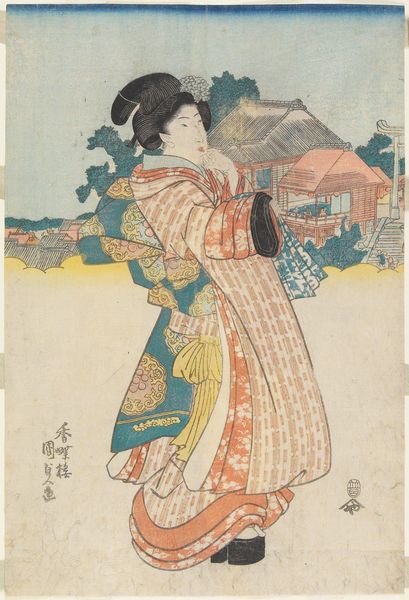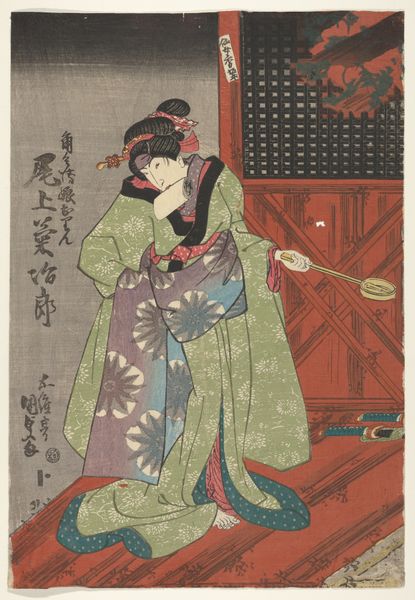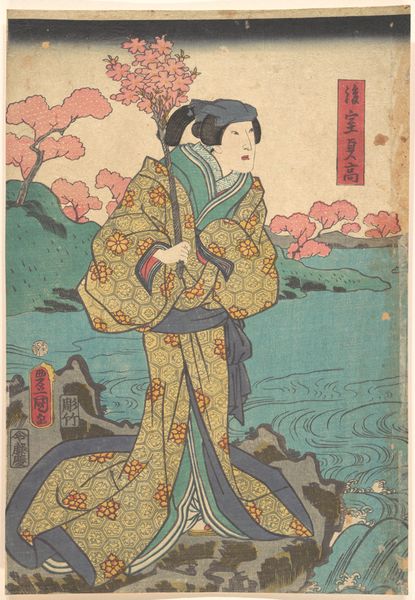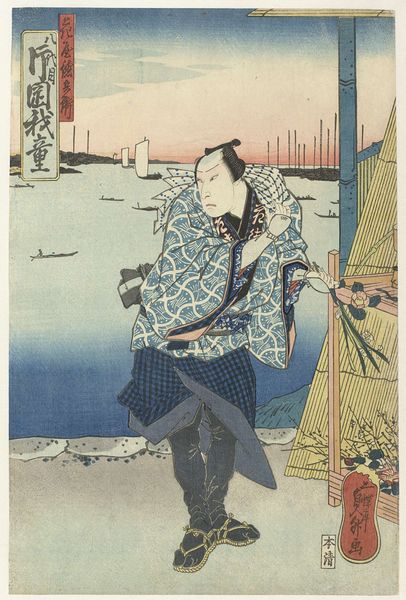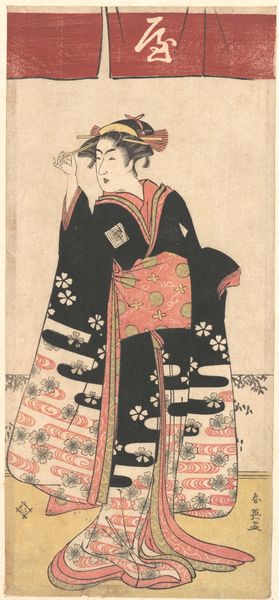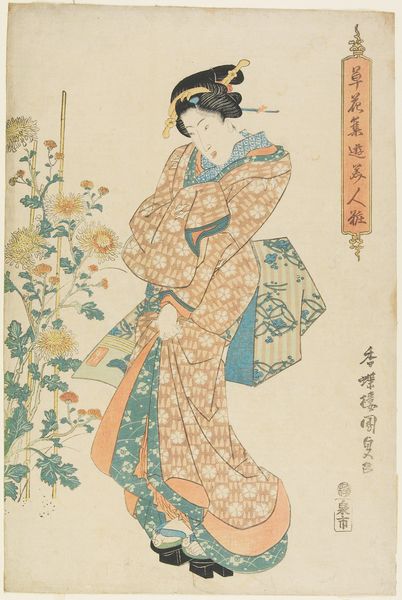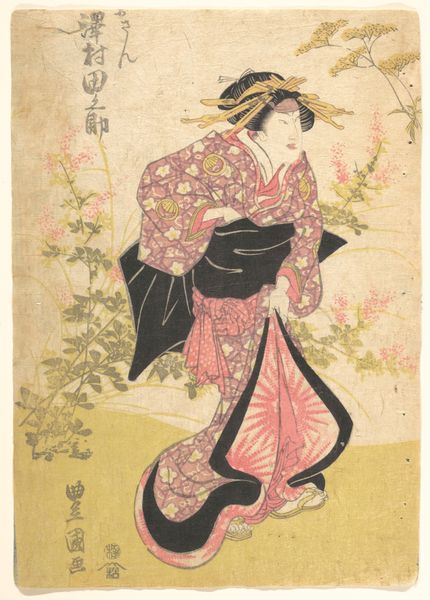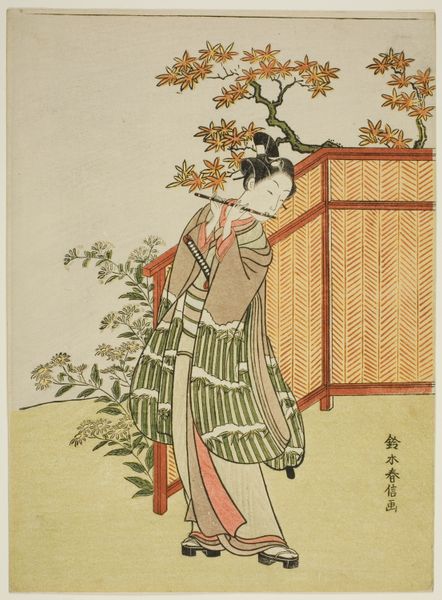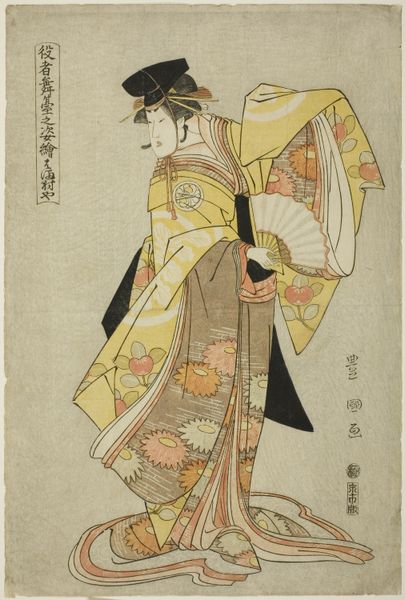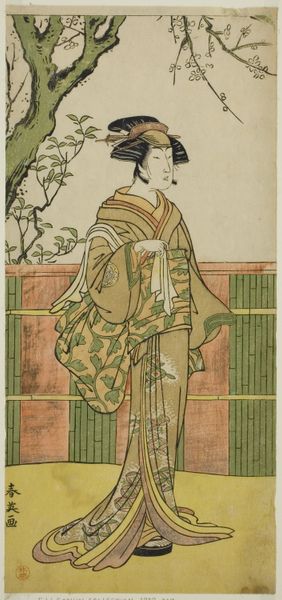
print, ink, woodblock-print
#
portrait
# print
#
asian-art
#
landscape
#
ukiyo-e
#
figuration
#
ink
#
woodblock-print
#
orientalism
Dimensions: 14 5/16 × 9 11/16 in. (36.4 × 24.6 cm) (image, vertical ōban)
Copyright: Public Domain
Utagawa Hiroshige's woodblock print presents us with a woman adorned with peonies, symbols steeped in cultural resonance. In the East, these blooms are emblems of wealth, honor, and nobility. Yet, their allure extends far beyond mere material status. Consider the parallels with the rose in Western traditions – both flowers have, across time, become synonymous with beauty, love, and ephemeral existence. Here, the peony isn't just a decorative element; it's a powerful force, engaging us on a subconscious level with its intense emotional states. The cyclical progression of such symbols is captivating; peonies reappear in various guises, evolving, adapting, and carrying echoes of past meanings. They have resurfaced, evolved, and taken on new meanings in different historical contexts, reminding us of the enduring power of cultural memory.
Comments
minneapolisinstituteofart about 2 years ago
⋮
After sumptuary edicts were issued in 1842, restrictions against luxurious fashions became even more strident. Subdued colors and simple stripes became the norm, even among the women working in pleasure quarters. By the mid-19th century, wearing clothing with muted colors and patterns was no longer a government imperative, but was regarded as exhibiting good taste. As outer robes became simpler, fashionistas shifted their focus to the linings and inner robes. The woman in this print, for example, wears a rather simple plaid kimono, but her inner robe is bright red. In addition, the blue lining of her robe matches her obi sash. The dark stripe in the center of the sash has the floral pattern that is echoed by the pattern of the sash's red lining. Such close attention to detail indicates a subtle and sophisticated fashion sense.
Join the conversation
Join millions of artists and users on Artera today and experience the ultimate creative platform.

